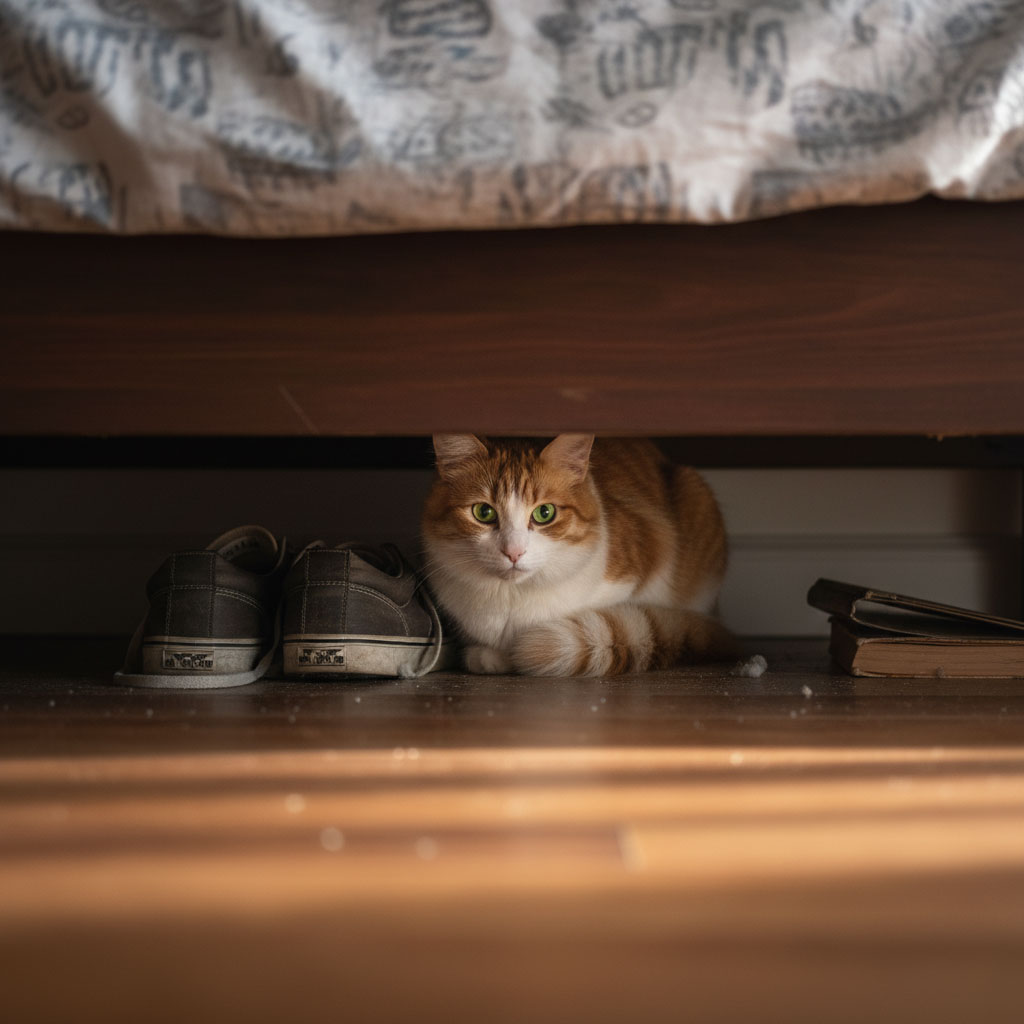Why Is My Cat Suddenly Hiding? Decoding a Common Sign of Stress or Illness
All cats have their favorite hiding spots—a cozy closet, the space under the bed, an empty cardboard box. Hiding is a natural feline instinct, a way for them to feel safe and secure. But what does it mean when this behavior changes? If your normally social cat has suddenly become a recluse, they aren’t being antisocial. They are trying to tell you something.
A sudden increase in hiding is one of the most common ways cats signal that they are in distress. Whether the cause is physical or emotional, it’s a behavior that should never be ignored. To figure out what’s going on, you need to become a compassionate detective and look for clues in their environment and overall behavior.
Here are the three most common reasons why your cat is suddenly hiding.
1. They Are in Physical Pain or Feeling Unwell
This is the number one reason for a sudden change in behavior. In the wild, a sick or injured cat is vulnerable to predators. Their instinct is to hide to protect themselves until they feel better.
- What it could be: Almost any medical condition can cause hiding. Common culprits include dental disease (a sore mouth makes them feel vulnerable), arthritis (painful joints), urinary tract infections, or gastrointestinal upset.
- What to track: Is the hiding accompanied by any other subtle symptoms? Are they also eating less, avoiding the litter box, or looking unkempt? Logging these seemingly separate events together can reveal a clear pattern of illness for your vet.
2. They Are Experiencing Fear or Anxiety
Cats are highly sensitive to their surroundings. A perceived threat can easily send them running for cover.
- What to look for: The trigger is often an obvious event. Common sources of fear include loud noises (thunderstorms, fireworks, a vacuum cleaner), the presence of strangers or visitors, or conflicts with another pet in the household.
- What to track: Note exactly when the hiding occurs. Does it only happen on days you have guests? Or right after you’ve had a tense interaction with another cat? Identifying these triggers is the first step to creating a more secure environment for them.
3. Their Environment Has Changed
Cats are creatures of habit and thrive on predictability. Even a small change to their environment can feel like a major upheaval, causing stress that leads to hiding.
- What to look for: Have you recently moved, rearranged the furniture, or introduced a new object with a strange smell? Have you changed their brand of food or litter? Has your own daily routine or work schedule changed?
- What to track: Often, the connection isn’t immediately obvious. By logging daily events—both big and small—you might uncover a surprising correlation. Perhaps the hiding started the same week you began using a new scented laundry detergent. This kind of data is invaluable.
Finding the Pattern is the Solution
Your cat’s hiding isn’t random; it’s a reaction. The key to helping them is to understand the cause. Is it a symptom of illness that requires a vet visit, or a response to a new stressor in their environment? Relying on memory to connect the dots is a recipe for frustration.
iKnowMyCat is your pattern-finding partner.
Log when and where your cat hides, alongside any other health symptoms or environmental events. The app helps you visualize these connections over time, turning vague observations into a clear story. This is the data that helps you—and your vet—understand the root cause of their distress.
Download iKnowMyCat from the App Store and Google Play today.
*Disclaimer: This guide is for informational purposes only and is not a substitute for professional veterinary advice. Always consult your veterinarian with any health concerns.

